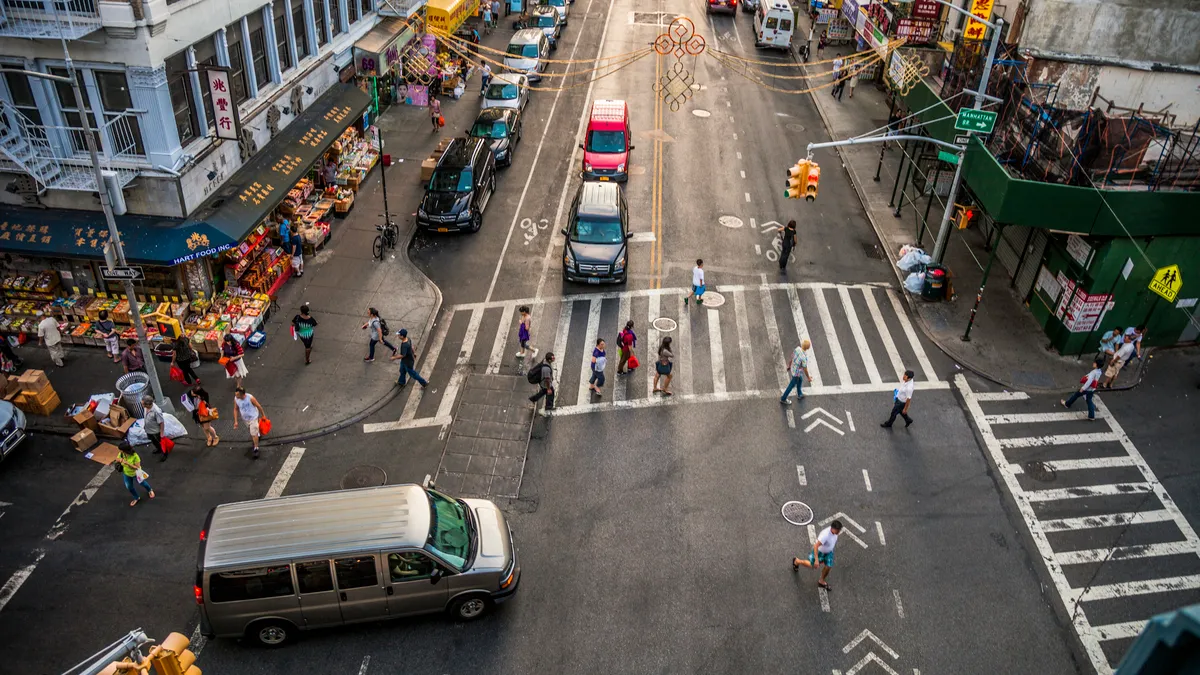Dive Brief:
- Cities with rail transit, small blocks and dense, low-speed road networks have fewer transportation-related injuries, according to a new study published in The Lancet Planetary Health. The most injury-prone cities had sparse road networks and less rail infrastructure, the study found.
- Researchers from Australia, Spain and the United States analyzed maps of about 1,700 cities around the world and grouped them into nine unique types based on the amount of rail network, road design and the amount of open green and park space.
- The poorly performing city types have a collective population of nearly 1.7 billion people and are largely in areas across western China, India, South America, the former Soviet Union and Africa. Many are also in low-income regions that are developing quickly.
Dive Insight:
Cities are trying to aggressively crack down on traffic deaths, especially through Vision Zero plans that seek to eliminate traffic deaths and injuries. While many of those efforts have involved steps like redesigning crosswalks and reducing speed limits, study author Jason Thompson said the latest findings are a reminder that cities should also look at their basic design.
"We have to think beyond the car," said Thompson, a senior research fellow at the University of Melbourne. "We lock in car dependency, and when that’s locked in you’re automatically exposing yourself to risk, that could be reduced."
As pedestrian deaths have climbed in recent years, the conversation over solutions has increasingly turned to infrastructure. A 2019 report from Smart Growth America concluded that poorly designed roads and intersections leave bicyclists and pedestrians at risk, especially in southern cities that are largely designed for cars.
Taking cues from the types of cities that rated well in the Lancet study, policymakers have tried to encourage denser growth and more transit, even though that can be a challenge in cities already built for automobiles. San Francisco, however, has taken the major step of banning cars on a stretch of Market Street, starting this week.
Thompson said that as developing areas continue to urbanize, or as cities expand to encompass more suburbs, they should take lessons from the safest cities and plan for denser, more transit-friendly design.
"Everyone talks about the car and the road, but what we’re saying is if you don’t set cities up right in the first place, you’re creating a situation where you’re always mopping up road trauma," Thompson said.











